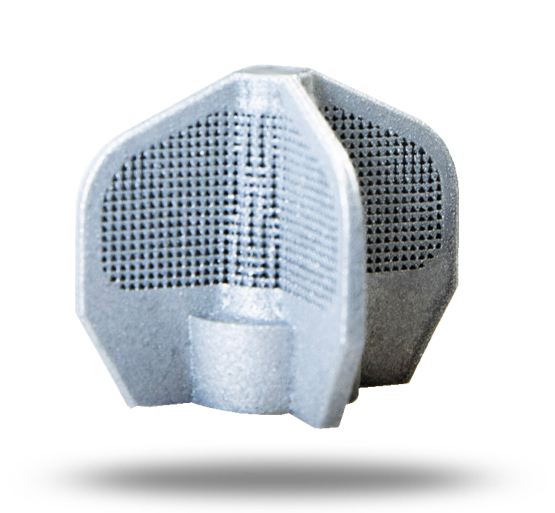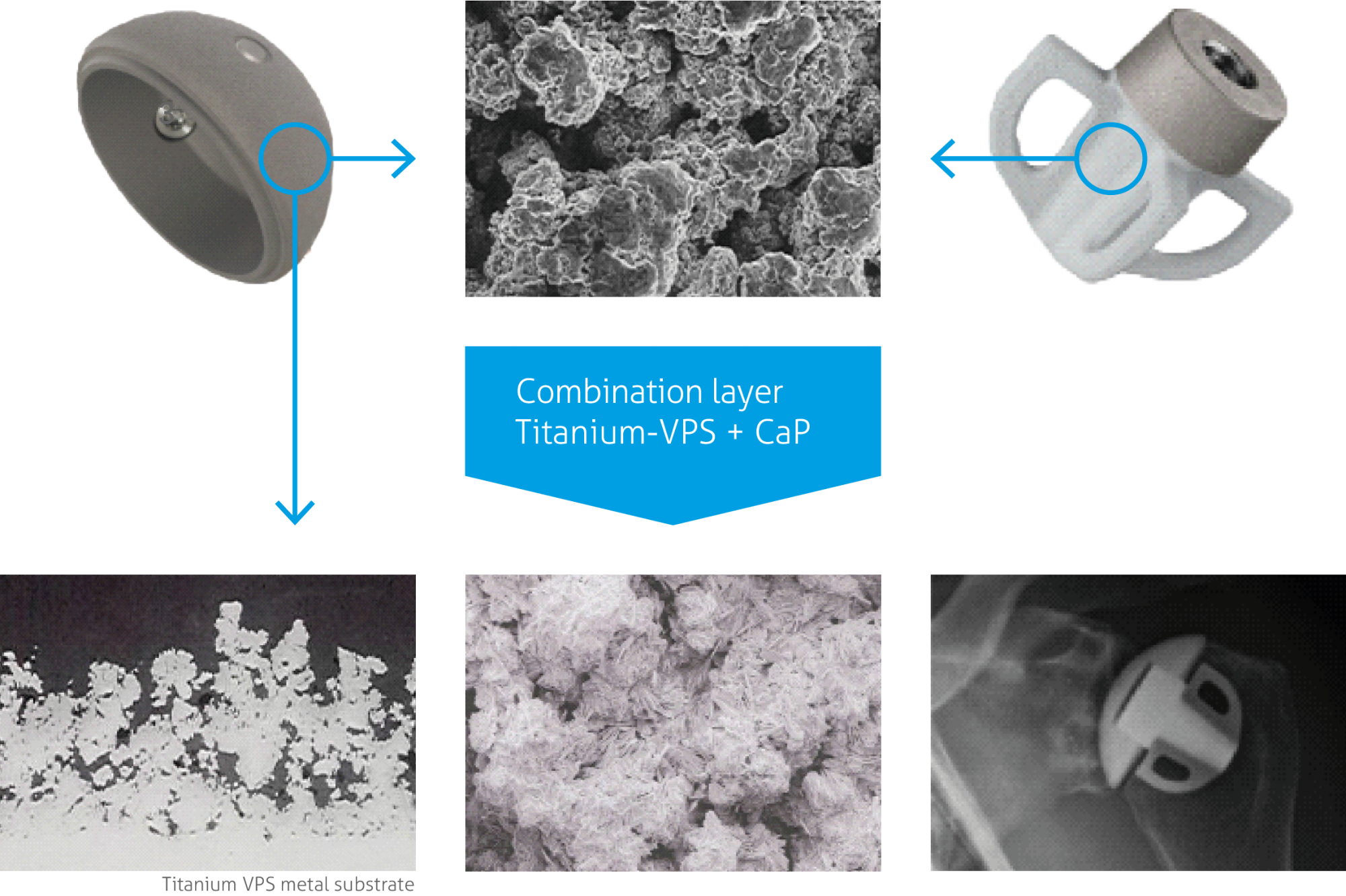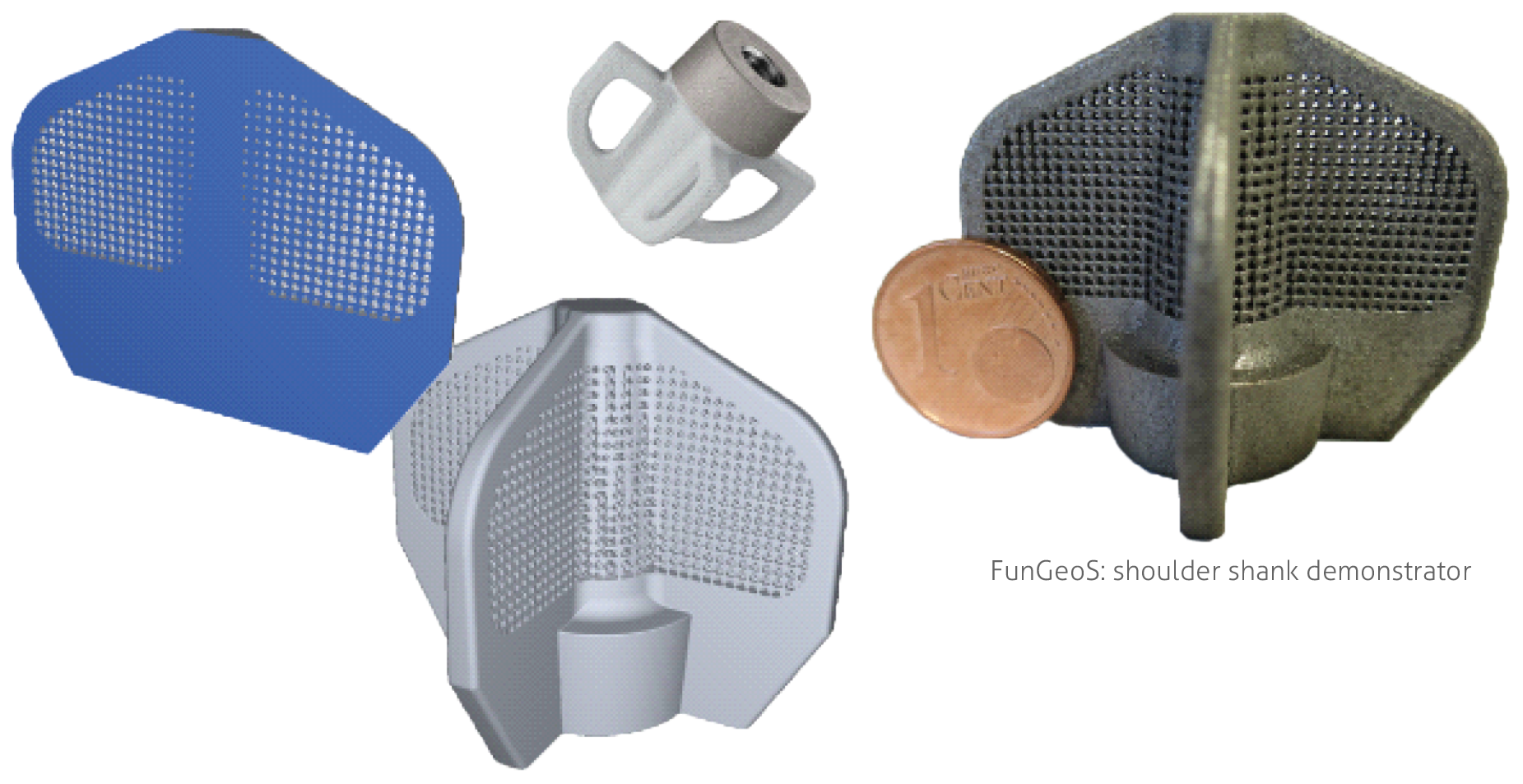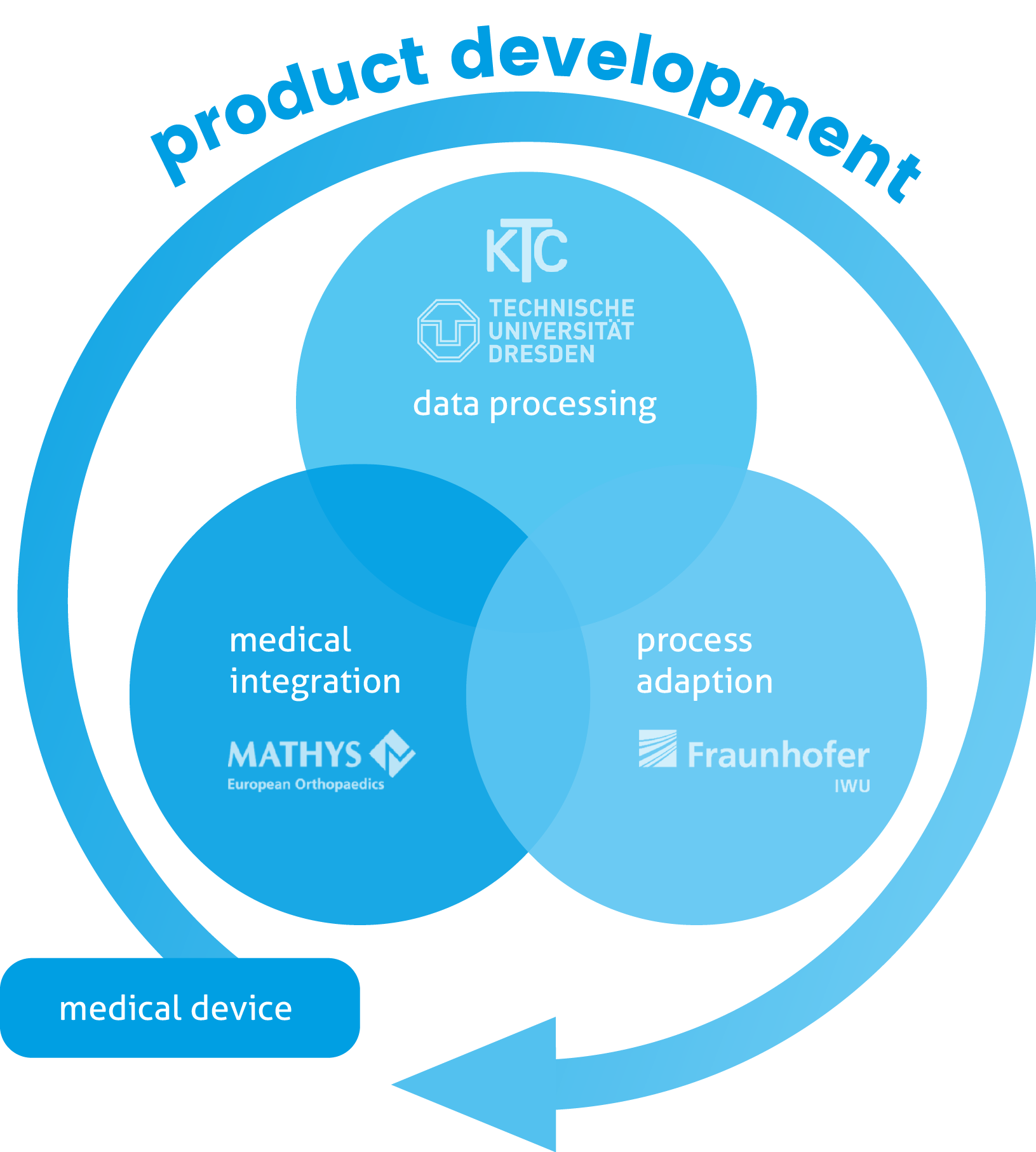Technology Project
MediSlice

Objective:
Improvement of industrial manufacturability and functionalization of complex open-pored osteo-implants by using geometry-adaptive slicer functions for laser beam melting
Partners: 
Duration: 01.11.2019 - 31.10.2021
Content
The MediSlice project is investigating the extent to which the possibilities of the additive manufacturing process laser beam melting (LBM) for the production of fine structures can contribute to the improvement of bone implants with fine, cellular structures. These offer several advantages over conventionally produced bone implants:
• Better ingrowth behaviour of the bone by adapting the surfaces and cavity geometries
• Prevention of regression of the surrounding bone due to bone-like component stiffness
• Cost reduction by dispensing with coating measures such as calcium phosphate (CaP)

Figure 1: conventional designs of osteo-implants and REM images of their surfaces before and after functional coating
Objective
The aim of the research project is to show that an adaptive, geometry-related adjustment of the exposure strategies in the slicing process can improve the quality and optimize the production time of medical technology components using laser beam melting. Furthermore, it is to be investigated to what extent the use of cellular structures, in comparison to the widespread grid structures, allows the defined adjustment of cell colonization by osteoblasts without an additional calcium-phosphate layer (CaP). It will also be shown whether the approaches are also suitable for practical use with regard to the sterilisability of the components.

Figure 2: In the AGENT-3D project "FunGeoS" already successfully implemented demonstrator of a cellular shoulder shaft implant. The aim of the MediSlice project is to automate the process chain for the creation of such structured implant components, to increase the quality and reliability of the components and to prove their general applicability for osteo-implants.
Realization
For this purpose, MediSlice considers and maps the entire product development process. The individual steps of this process are validated and optimized if necessary.

Figure 3: Together, the research units cover the entire product development process for cellular osteo-implants and are considered in the AGENT 3D project MediSlice.
The focus of the optimization is on the improvement of the production quality by means of an upstream, automated geometry analysis and the establishment of exposure strategies and process parameterization adapted to specific geometry areas. The manufacturing know-how as well as the decision which process parameters and exposure strategies are used for a specific geometry section shall be transferred into an automatable process model. This will also be developed and validated within the research project.